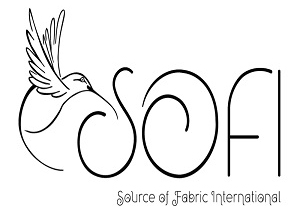For anyone looking to dive into the world of fabric, purchasing wholesale fabric can be a game-changer. Whether you’re a seasoned designer or a DIY enthusiast, buying in bulk not only saves money but also opens up a vast array of choices. The right fabric can transform a project, and understanding how to source it effectively is essential.
In this guide, readers will discover the ins and outs of buying wholesale fabric. From identifying reliable suppliers to understanding pricing structures, the process may seem daunting at first. However, with the right strategies, anyone can navigate the wholesale market and find the perfect materials for their creative endeavors.
Understanding Wholesale Fabric
Purchasing wholesale fabric provides advantages for both designers and DIY enthusiasts. It offers significant cost savings and access to various fabric types and styles.
Benefits of Purchasing Wholesale Fabric
- Cost Savings: Buying in bulk typically leads to lower prices per yard, which can greatly reduce overall project costs.
- Variety: Wholesale suppliers often carry a wide range of fabrics, colors, and patterns, enabling more creative choices.
- Consistent Quality: Reputable wholesalers maintain high standards, ensuring fabrics meet specific quality requirements.
- Availability: Purchasing wholesale often guarantees access to larger quantities, aiding in larger projects without worrying about running out of fabric.
Factors to Consider When Buying
- Supplier Reputation: Research suppliers for reliability and customer feedback. Established suppliers often provide better services and quality.
- Fabric Type: Know the specific fabric required for the project. Different projects need different types, such as cotton, polyester, or blends.
- Minimum Order Requirements: Check the minimum purchase limits set by suppliers. Some may require larger orders, which may not suit smaller projects.
- Shipping Costs: Factor in shipping expenses, as they can significantly impact overall pricing. Ensure to compare shipping options from various suppliers.
- Samples: Request fabric samples whenever possible to verify quality before making a bulk purchase. This step helps in making informed decisions.
By understanding these aspects, purchasing wholesale fabric can become a straightforward process that benefits various creative endeavors.
Finding Wholesale Fabric Suppliers
Finding reliable wholesale fabric suppliers is essential for successful purchases. With various options available, a focused approach simplifies the process.
Online Wholesale Fabric Options
Online platforms provide access to a wide range of wholesale fabrics. Websites like Fabric.com, Wholesale Fabric Direct.com, and Mood Fabrics.com offer extensive catalogs. These sites display various fabric types, colors, and quantities. Buyers can compare prices and evaluate reviews from other customers. Additionally, many platforms provide free samples, helping ensure quality before committing to larger orders.
Local Fabric Wholesalers
Local fabric wholesalers often present an opportunity for hands-on shopping. Visiting a physical store allows buyers to inspect fabric quality firsthand. Cities usually have dedicated fabric districts or shops that specialize in wholesale fabric sales. Networking with local designers or attending fabric trade shows can lead to discovering reputable suppliers. Many local wholesalers may accommodate smaller minimum order requirements, making it easier for small businesses and DIY enthusiasts to purchase.
Evaluating Fabric Quality
Evaluating fabric quality is crucial for ensuring satisfactory purchases. Buyers should examine several key features to make informed decisions.
Key Characteristics of Quality Fabric
- Weight: Quality fabric usually feels substantial but not overly heavy. Different projects require specific weights, so consider what fits best.
- Texture: Good fabric has a smooth surface without bumps or rough patches. Feel the fabric to assess comfort and suitability for intended use.
- Threads: Inspect the threads and seams for tightness and evenness. Quality fabric has consistent stitching and no loose threads.
- Color: Superior fabrics display vibrant and consistent colors. Watch for any fading or uneven dyeing that may indicate lower quality.
- Durability: Test fabric strength by gently pulling or stretching. A quality fabric withstands some tension without tearing or fraying.
- Breathability: Good fabric allows air circulation, especially for clothing. Fabrics like cotton and linen offer better breathability over heavier materials.
How to Request Samples
Requesting samples helps verify fabric quality. Here’s how to approach it:
- Identify: Choose desired fabrics based on project needs. Pinpoint specific types or colors that match project goals.
- Contact Suppliers: Reach out to selected suppliers by phone or email. Clearly state the request for samples and mention specific fabrics.
- Be Polite: Use a friendly tone when requesting samples. Suppliers often appreciate courteous communication and may be more inclined to assist.
- Specify Quantity: Mention the number of samples needed. Several samples provide a broader perspective on the quality.
- Follow Up: If there’s no response within a week, send a polite follow-up message. Suppliers sometimes overlook requests due to busy schedules.
By focusing on these aspects, buyers can better assess fabric quality and make successful wholesale purchases.
Negotiating Prices and Terms
Negotiating prices and terms is essential for getting the best deals on wholesale fabric. Effective communication and preparation can lead to favorable outcomes for buyers.
Tips for Negotiating with Suppliers
- Research Market Rates: Understand the average prices for the fabrics of interest. This knowledge strengthens negotiation power.
- Build Relationships: Establish rapport with suppliers. A positive connection can lead to better terms and prices.
- Inquire About Discounts: Ask about bulk purchase discounts or seasonal promotions. Suppliers may offer reduced prices for large orders.
- Be Clear About Needs: Clearly state fabric types, quantities, and expected delivery times. This transparency helps suppliers provide accurate quotes.
- Stay Flexible: Show willingness to adjust order sizes or terms. This flexibility can prompt suppliers to offer better deals.
- Negotiate Payment Terms: Discuss payment terms openly. Favorable terms can include longer payment periods or deferred payments.
Understanding Payment Terms
Payment terms outline when and how payments are made. Buyers must grasp these terms to avoid issues.
- Immediate Payment: Some suppliers require payment upfront. This may be common for new buyers or smaller orders.
- Net 30/60/90: These terms allow payment within 30, 60, or 90 days after receiving the invoice. It offers some breathing space for buyers.
- Deposits: A deposit may be required upon order confirmation. This practice secures the transaction while balancing supplier risk.
- Credit Options: Some suppliers provide credit terms for established buyers. It’s crucial to fully understand the limits and conditions of these options.
- Late Fees: Verify any penalties for late payment. Knowing potential fees ensures timely payments and avoids additional costs.
Elevate Your Creations with Source of Fabric
Looking for premium-quality fabrics at unbeatable wholesale prices? Source of Fabric offers an extensive selection to fuel your creativity—perfect for designers, DIY enthusiasts, and businesses. Access cost-effective, top-notch materials and bring your projects to life with ease.
Shop Now and Save Big
Conclusion
Purchasing wholesale fabric can open up a world of possibilities for designers and DIY enthusiasts alike. By following the right strategies and understanding the key factors involved, buyers can enjoy significant savings and access a diverse range of materials.
The journey doesn’t have to be overwhelming. With reliable suppliers and a keen eye for quality, anyone can navigate the wholesale market successfully. By fostering relationships with suppliers and honing negotiation skills, buyers can secure the best deals while ensuring their creative projects are supported by top-notch fabrics.
Embracing the wholesale fabric buying process not only enhances creativity but also builds a foundation for successful projects in the future.
Frequently Asked Questions
What are the benefits of purchasing wholesale fabric?
Purchasing wholesale fabric offers significant cost savings, as buying in bulk reduces prices per yard. It also provides access to a vast variety of fabric types, ensuring you find the perfect match for any project. Additionally, reputable suppliers maintain consistent quality, and larger quantities are often available for extensive projects, making wholesale fabric ideal for both designers and DIY enthusiasts.
How can I find reliable wholesale fabric suppliers?
To find reliable wholesale fabric suppliers, start by researching online platforms like Fabric.com and WholesaleFabricDirect.com, which offer extensive catalogs and customer reviews. Alternatively, visit local fabric wholesalers to inspect fabric quality firsthand. Networking with local designers and attending fabric trade shows can also help you discover reputable suppliers with smaller minimum order requirements.
What should I consider before buying wholesale fabric?
Before buying wholesale fabric, research the supplier’s reputation and verify the quality of the specific fabric types you need. Pay attention to minimum order requirements, factor in shipping costs, and request fabric samples to assess quality. Understanding these elements will help you make informed decisions and ensure a smooth purchasing experience.
How can I evaluate the quality of wholesale fabric?
To evaluate the quality of wholesale fabric, check its weight, texture, thread consistency, color vibrancy, durability, and breathability. Requesting samples from suppliers allows you to assess these characteristics. Be specific about the fabric types you want, and follow up if necessary to ensure you receive the samples you need for quality evaluation.
What are some tips for negotiating prices with suppliers?
When negotiating prices with suppliers, start by researching market rates to understand fair pricing. Build relationships with suppliers and inquire about possible discounts. Clearly state your needs, stay flexible during discussions, and openly discuss payment terms. This approach increases your chances of securing favorable deals on wholesale fabric.
What payment terms should I be aware of when buying wholesale fabric?
When purchasing wholesale fabric, be aware of various payment terms. Options typically include immediate payment, net terms (a set period before payment is due), deposits, or credit options. Understand each term thoroughly and ask about any potential late fees. Clear communication about payment can help avoid misunderstandings and streamline transactions.


